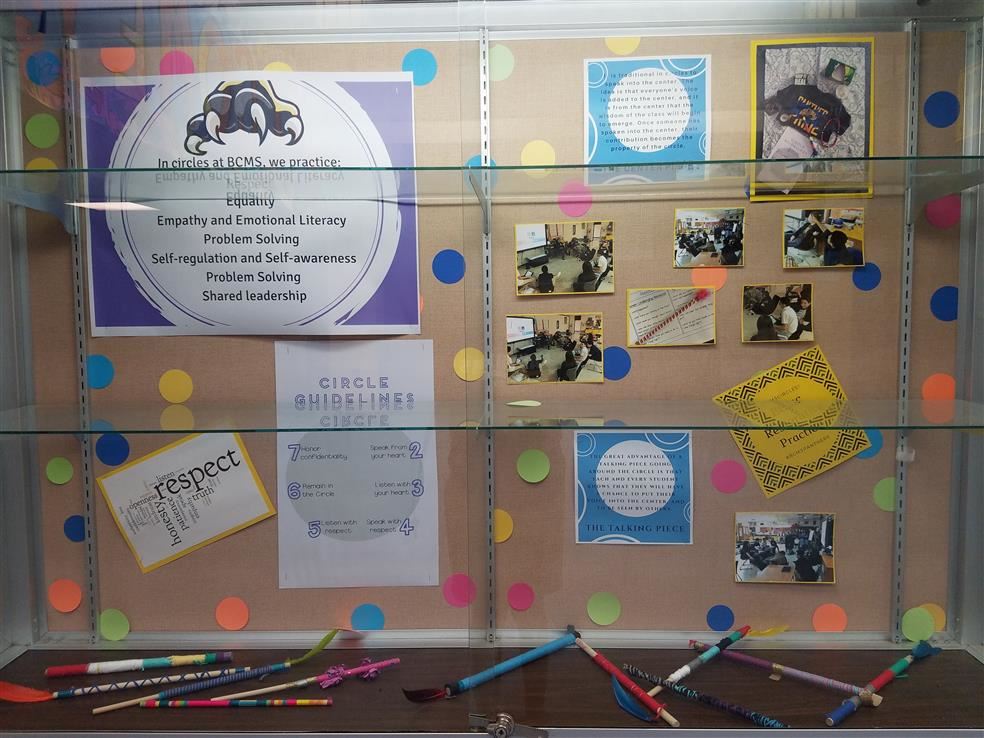Restorative Practice @ Battle Creek Middle School

-
Hello and welcome to the Restorative Practice page at Battle Creek Middle School. Restorative Practices at BCMS helps support the Mission, Vision Beliefs: At Battle Creek Middle School…. All members of the learning community (students, parents, families, colleagues, and partners) are valued and respected. All members learn through culturally responsive teaching and learning. All members meet and embrace high academic and social expectations, and believe that learning is collaborative and life-long. All members interrupt instances of systemic inequalities and injustices.
What are Restorative Practices?
The social science of promoting and sustaining strong and healthy relationships across the school by implementing proactive and responsive programs rather than reactive strategies. This leads to increased social capital, improved individual self-discipline, self- regulation, emotional well-being leading to improved academic outcomes and improved whole school climate.
Whole school management that is based on collaborative decision making in a proactive community rather than a reactive organization.
It is an explicit framework of practices based on Restorative Justice Philosophy that builds and strengthens relationships and social connections promoting accountability and responsibility and to repair harm when relationships break down through wrongdoing, mistakes and misunderstanding. [David Vinegrad, Behaviour Matters 2013]
(see www.otlcampaign.org/sites/default/files/restorative-practices-guide.pdf).
Restorative Practices within a PBIS Framework
How do PBIS and Restorative Practices Intersect? PBIS and Restorative Practices are whole-school models that can be used hand in hand to increase positive outcomes for student behavior. Both emphasize prevention and positive responses to problem behavior. PBIS’ multi-tiered structure for implementing practices and the systematic use of data provide a framework for using restorative practices that include a process for including youth, staff, and community voice within that framework.
Both PBIS and Restorative Practices place high value on student and staff engagement and involvement. They support social-emotional learning for students and staff, and are seen as effective strategies to lower racially disproportionate discipline referrals by offering adults alternative responses to student misbehavior. PBIS shifts adults’ focus from punishing and excluding to teaching and acknowledging positive student behavior, while restorative practices encourage personal reflection, accountability, and healing for both students and adults. Both approaches seek to enforce positive behavior and uplift student strengths [The California Conference for Equality and Justice, 2013].






